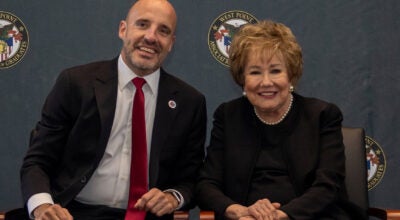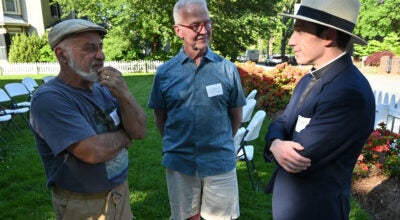Changes on the way for schools’ AIG program
Published 12:00 am Wednesday, May 15, 2019
SALISBURY — In an effort to address longstanding shortcomings, Rowan-Salisbury Schools Director of Programs Eisa Cox on Monday debuted potential districtwide changes to the program for academically and intellectually gifted students.
The suggested changes include a new way of screening and identifying gifted students and classroom-based instruction. The updates are pending approval by the Board of Education on May 28 and follow consultations with teachers, administrators and parents.
“We uncovered some things we really need to pay attention to,” said Cox.
She said the No. 1 area of need in the academically and intellectually gifted program is equity.
According to her presentation to the Board of Education on Monday, 2% of students identified as gifted are Asian-American, 5% are African-American, 8% are Hispanic, 3% are multiracial and 82% are white.
In contrast, the district as a whole is 1% Asian-American, 18% African-American, 19% Hispanic, 5% multiracial and 57% white, meaning there are 25% fewer minority students represented in the program.
This disparity led to the first step in revamping the program: a new means to identify those who are gifted. That means adjusting testing to meet students where they are regardless of life experience or socioeconomic status.
“We know much of standardized testing has an economic bias based on vocabulary,” Superintendent Lynn Moody explained, adding that students in poverty may underperform other gifted learners on tests because of a lack of vocabulary exposure. “We may have to look at other indicators, particularly for children of poverty.”
Board member Travis Allen expressed concern about changing gifted screening and identification, worrying that updated tests would “dilute” the program and make the “gifted” label easier to attain.
“I know equity is important, but I also think it’s a politically correct word sometimes,” Allen said. “In this situation, I don’t see how equity plays into it.”
Allen said that being labeled gifted shouldn’t fall in a gray area: either a student passes the test for the designation or he doesn’t.
“I think if we dilute it, we make it mediocre because we think everybody should be in that category when everybody is not,” he said.
But Cox said addressing equity would not make the test easier; it would just be presented in more accessible means, using pictures for students for whom English is not their first language, for example.
The new model would also open services for gifted learners to all schools, whereas only a select number currently offer AIG programming. It extends program supports through high school, offering acceleration and a differentiated education plan for all enrolled students.
Previously, gifted high schoolers were only served through college and career credit, honors or advanced placement courses, said Cox.
Still other support services would be offered: nurturing for kindergarten through third-grade children, options for acceleration, and a “Digital Badging Program” that includes online modules, field experiences and a public showcase of student work.
But the biggest change to the academically and intellectually gifted program would include a shift away from pull-out instruction. Instead, students would be served in traditional classrooms with students with a variety of abilities.
Teachers trained to provide adequate support to gifted learners would lead these classrooms.
According to research, Cox said, this co-mingled instruction would lead to higher rates of academic growth for academically gifted students. Currently, growth patterns for gifted students in the district are stagnate or negative under the traditional, pull-out model.
Board members expressed concern that the new model would be to the detriment of gifted students or create additional work for teachers, but Cox said that is not the case.
Teachers are being pushed to personalize instruction for individual students anyway, she said.
“Based on research, students in these heterogeneous classrooms actually had more growth than just about any other model,” she said. “Some saw upwards of two years of growth in one year. Right now, we’re seeing negative growth in a lot of our schools.”




